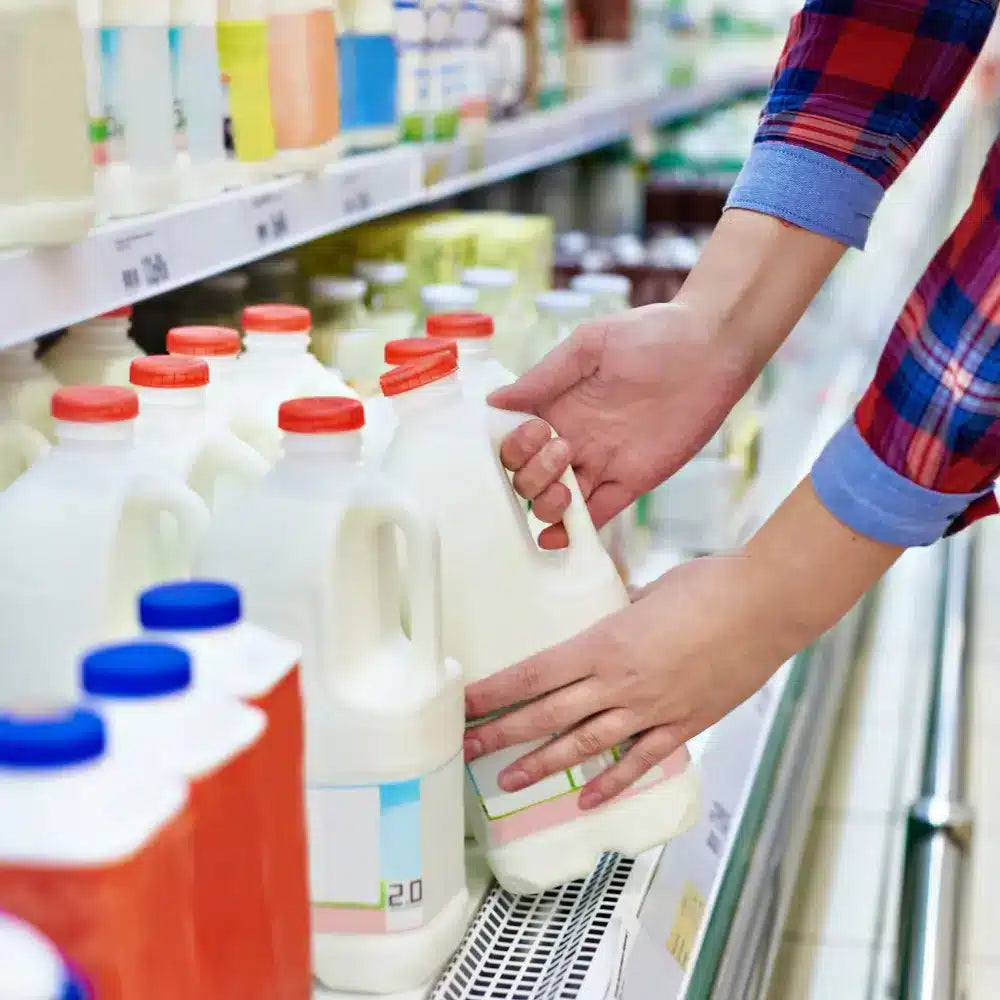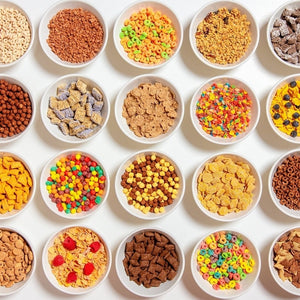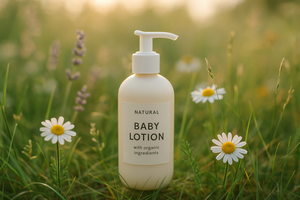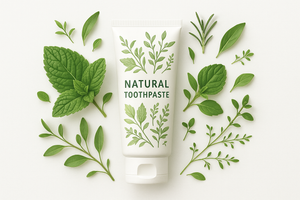Most Important: Always Choose Organic Milk!
For nearly 15 years, studies have been showing that organic milk has a healthier nutritional profile than does conventional milk.
Organic milk contains more good omega-3 fatty acids, more antioxidants, and a higher nutrient mineral content than conventional milk.
Dairy cows under organic management eat more grass than those under conventional management, and that difference in their diet results in more nutrient-rich milk. Also, there are notable differences in the levels of antibiotics, growth hormones, and pesticides in conventional milk versus organic milk.
A majority of samples of conventional milk repeatedly test positive for residues of antibiotics— two of which are banned from dairy production in the United States. The majority of conventional milk samples also test positive for controversial pesticides. Researchers have also found that residues of growth hormones in conventional milk are 20 times higher than in organic milk.
What’s in Conventional Milk?
Cows raised on conventional dairy farms can be fed grass, hay, grains, soy, corn, and human food byproducts (including candy and bakery waste).
Conventional dairy farmers do not have to conform to the requirements of grass-feeding or organic farming practices. Conventional cows may be given growth hormones and antibiotics.
It’s worth noting that corn and soy–both of which are used to make cow feed–are annual crops that require a lot of energy to produce and transport, emitting a lot of greenhouse gasses in the process.
These energy-intensive crops require synthetic nitrogen fertilizers, herbicides, and pesticides. They also require a lot of fuel for machinery used to plant, harvest, process, and transport to dairy farms. This is especially true when feed grain is imported from other countries.
What Does Organic Mean?
When you buy certified organic milk, the milk is coming from a farm where:
- Cows eat 100% organic feed and grass.
- Per the USDA National Organic Program standards, the animals must graze pasture during the grazing season, which must be at least 120 days per year. (You’ll learn about some brands that don’t adhere to this below, under The Sneaky Stuff).
- Farmers may not use animal drugs like hormone growth promoters.
- Cows that need antibiotics are segregated.
- They use less energy.
- Chemicals are avoided.
- They help build healthy soil.
- They strive to mitigate climate change.
As you can see, organic milk comes from farms that have less reliance on grain for feed. Pasture is made up of perennial grasses that require few inputs to grow year after year, especially under organic management–which prohibits synthetic nitrogen fertilizers.
For your own health and the health of the planet, we implore you to only buy certified organic dairy products.
Ideally, you’ll choose 100% grassfed milk. Keep reading to learn why.
Why Grassfed Milk Is Superior
Cows are ruminants and as such they evolved to eat grasses, not grains. Most milk (and beef) sold in America today comes from cows that have been fed corn, soy, and other grains.
Farmers cheaply fatten the animals up, but because cows’ multi-compartmented stomachs can’t properly digest corn, it also makes them more susceptible to E. coli, a pathogenic bacteria that can spread to humans.
Not only are grassfed animals healthier, but their meat and milk are more nutritious than their corn-fed counterparts. Grassfed meat and dairy contain more beta-carotene and omega-3 fatty acids, which may prevent dementia as well as heart disease.
Grassfed dairy cows produce milk that is also high in conjugated lineoleic acid (CLA), a healthy omega-6 found in milk that’s been shown to lessen symptoms of inflammatory disorders such as allergies and asthma and promote muscle growth and fat burning in the body. Grassfed milk has six times as much CLA as does grain-fed organic milk.
Cows manufacture CLA from the grass in their gut, and so commercially-raised cows that only eat soybeans or corn meal produce little, if any, CLA.
In well-managed grassfed operations—where cows are regularly moved to fresh pasture–their manure replenishes the soil, improving the quality of the forage growth, which in turn reduces erosion and water pollution.
So how do you know that the milk you are buying truly comes from grassfed cows? All cattle are grassfed until they get to the feedlot, and any producer can put the words “grassfed” on their product, even if the cows are fed mostly grains.
(By the way, “100% grass finished” means the same thing as 100% grassfed.)
Note that the brands we've deemed Sneaky Stuff is milk that is organic but doesn’t have the healthy components because it’s not grassfed. Worse, some of the big retailers don’t even meet the requirements for organic dairy, despite having the label! If interested, you can read this article for more info.
Grassfed Certifications
It’s important to note that just because cows are grassfed does not mean that the farm raising them is following organic farming practices. What it does mean is that the cows are only fed grass and forage.
Cows that are 100% grassfed are not given grain, grain products, or corn silage, but the pastures on which they graze may be sprayed with pesticides or herbicides or be synthetically fertilized. Grassfed cows can be given growth hormones and antibiotics.
Obviously, the best milk comes from 100% grassfed cows raised on certified organic farms.
There are a few reliable and strict grassfed certifications to look out for when you are shopping for dairy and meat. Unfortunately, you won’t find these certifications on almost any of the milk we recommend below, but we have included them in case you have access to a small local dairy.
1) Food Alliance, Certified Grassfed
To be certified grassfed by Food Alliance, all livestock must meet or exceed a Level 3 on Food Alliance’s Whole Farm general sustainability standards, which cover integrated pest management; soil, water, and wildlife conservation; and safe and fair working conditions. All animals must be on range or pasture for their entire lives; they must not be confined to pens or feedlots; they cannot be fed any grain, grain byproducts, or animal protein products; they can never be administered any antibiotics or hormones.
2) Certified Grassfed by A Greener World
To be Certified Grassfed by A Greener World, herds must first be certified Animal Welfare Approved, which forbid sthe use of growth hormones or routine antibiotics and also require an annual review of slaughter facilities. Animals must be raised outdoors on pasture for their entire lives and cannot be fed grain, grain byproducts, or any other form of feed concentrate. For reasons beyond the scope of this article, AGW-certified milks are usually not organic.
3) Pennsylvania Certified Organic (PCO) 100% Grassfed
To achieve this certification, farms must first be certified organic, which means antibiotics and growth hormones are forbidden. Livestock must be fed only organic pasture or forage—no grain or grain byproducts.
We hope to see the more of the larger, national brands (that we believe are producing healthy milk) seeking these certifications. Based on the conversations we’ve had with the producers of the Good Stuff (see more below), this seems to be the case.
The Pasteurization Question
All retail milk in the U.S. is pasteurized to remove any harmful microbes. But does how it is pasteurized matter?
The most common form of pasteurization in the dairy industry is High Temperature/Short Time (HTST). Basically, this means the milk is heated to a required minimum temperature of 161°F for 15 seconds. For pasteurized (HTST) milk, it is common to find a date code between 16 and 21 days from the date of manufacture.
Ultra-pasteurized (UP) milk has been flash-heated with injected steam to 280°F and then vacuum-chilled rapidly. The result is milk with a longer shelf life.
Other milk producers use a process called “UHT” (Ultra-High Temperature). This process not only removes any bacteria, but by bringing the milk to a temperature of 280° F it also renders the milk so sterile that it remains usable for up to 70 days!
We worry that sterile milk produced by UHT and UP may reduce some nutritional value, and therefore recommend choosing just regular pasteurized milk whenever possible.
Our Thoughts on Raw Milk
Raw milk, by which we mean milk right from the cow that is totally unprocessed, is touted as the most nutritionally dense milk because many of the healthy qualities of milk can be reduced or eliminated via pasteurization.However, raw milk can (rarely) carry concerning pathogens.If you want to drink raw milk, we highly recommend finding a farmer that conducts regular testing. Even then, it is worth knowing your farmer and asking them a lot of questions regarding their practices.(For what it’s worth, we do get raw milk from a local organic farm here in Lancaster, PA, and have been drinking it for years without any issues.)
What About Homogenization?
Homogenization is the process of breaking down the fat molecules in milk so that they stay integrated rather than separating as cream. Homogenization is a purely physical process–nothing is added to the milk.
The majority of milk sold in this country is homogenized. The process is so prevalent and expected by consumers, that the federal classification of milk is “homogenized.” The law does not require the label to specify if a milk is homogenized.
I have tried feeding my grandchildren un-homogenized milk and they call it “butter-milk” because they think it has butter floating around in it! They don’t like it, but if your kids do, go for it!
The Deal with A2A2 Cows
A2A2 is a term to describe cattle that have a particular genetic makeup that produces a protein that differs from cows with A1A1 genetics. A cow that has an A1 father and A2 mother is termed A2A1.
The A2 variation of cow is considered the original version of cattle, while the A1 variation is thought to be a more recent evolutionary offshoot.
A1 and A2 beta-casein are genetic variants of the beta-casein milk protein that differ by one amino acid. A genetic test can determine whether a cow produces A2- or A1-type protein in its milk.
It has been proposed that the protein makeup found in A2A2 cows makes their milk much more digestible in the human gut, although those claims have not been completely verified via large studies.
There is, however, considerable anecdotal evidence that some folks, especially those with difficulties digesting cows milk, have experienced noticeable improvement when drinking A2A2 milk instead of A1A1 milk.
Highly-Processed Milks
Our readers asked us about a bunch of different milks that come under the general heading of having additional processing. We cannot call any of these Good Stuff because the processing takes milk further and further from its natural state without additional health benefits.
Highly-processed milks include:
- Those with added DHA. The oils are synthetic and created in industrial labs (usually from algae) and don’t have any proven health benefits. Here’s some disturbing information on Horizon’s use of DHA.
- Lactose-free milks. If you are lactose-intolerant, my advice is to choose plant-based milk. If you want a lactose-free milk, your best bet is the one from Organic Valley, although it’s not grassfed.
- Ultra-filtered milk. These are processed to have more protein and less sugar, which may not be the worst thing in the world, but I couldn’t find a brand that does this with grassfed milk.
Whole Versus Skim Milk
All milk that is not whole milk is required by law to fortify with vitamin A. All milk, including whole milk, is required by law to fortify with vitamin D.
Therefore, non-fat and low-fat conventional milk and grassfed/organic milk are nutritionally similar, but whole milk may have some nutritional differences in terms of the type of fat.
Whole milk contains a higher amount of saturated fat and a higher caloric content when compared to low-fat or non-fat dairy, regardless of it being conventional, grassfed, or organic. There may be good reasons for you or your child to eat a low-fat diet, and you should discuss this with your physician.
Otherwise, I generally feel that less processed, less fortified whole milk is the healthiest choice.
I hate to complicate the issue further, but foods that are high in fat are more prone to chemical leaching. Most farms use plastic tubing to milk their cows, which likely introduces phthalates at the start of the production process, and the chemicals then hang out in the fattiest part of the milk. So this could be one reason to choose lower-fat dairy.
Keep reading for a bit more info on phthalates.














































